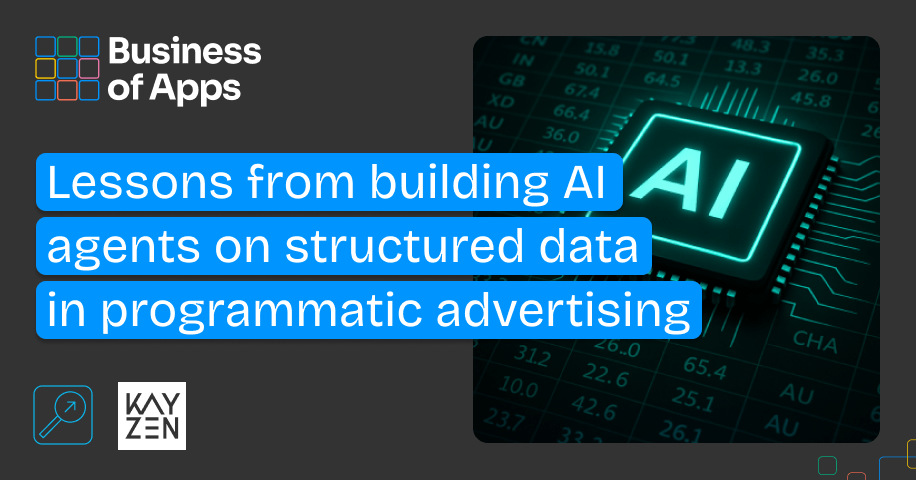App stores were created over a decade ago and the way they classify and categorize apps hasn’t changed much since then. App store categorization lacks the depth and granularity of how mobile apps have evolved and is not advanced enough for savvy mobile marketers use cases. With the advent of SKADNetwork and the impending changes that’ll come in the Android ecosystem, understanding user context and the context of the placement where an ad is shown will continue to be extremely important.
In order to help marketers bridge this gap, we are pleased to announce the release of “Smart App Categories”. With Smart App Categories, marketers will now be able to do granular targeting based on an App’s Category, Genre and Sub-genre.
Why Existing Store Categories are not Enough
Not Deep Enough- Store categories were created to make it easy for developers to tag and classify their apps. However, it was not created to differentiate and describe different complex nuances of the app ecosystem and hence the granularity of the categories is limited. While having a simpler category structure has its benefits, the repercussions of having limited store categories is that they do not represent the true depth and differentiation that exists between different apps.
For instance, both FIFA Soccer(com.ea.gp.fifamobile) as well as 8 Ball Pool (com.miniclip.eightballpool) are classified as “Sports” games in Playstore but not all Sports games are same- one will be of interest for people who love Soccer while the other is for Pool enthusiasts.

Not built for UA– The Store categories haven’t really evolved with time. They are used by developers while publishing the app and are useful for Store search ads but have limited usability when it comes to User Acquisition outside the app stores which is the dominant way of acquiring new users.
For instance, the game mechanics and users who play Hypercasual games are different from those who play Core games. These are some of the terms that are used by UA managers everyday. However, the store categories do not classify apps based on these terminologies. For instance, both Call of Duty (com.activision.callofduty.shooter) as well as Battery Run (com.arkhe.batteryrun) are classified as an “Action” game in the Playstore while the reality is that there is a vast difference in terms of user experience, game mechanics and type of users who play these two games.

Inconsistent– Since both the stores are maintained by different companies, there is no standardization in their terminologies. For instance, Google PlayStore has around 56 listed categories while iOS App Store has around 76 categories. App Store has 28 sub categories for category “Magazines & Newspapers” such as “Arts & Photography”, “Fashion & Style” etc while Play Store has just a single “News & Magazines” category without any sub-categories. There is a serious lack of consistency and hence the need to have a consistent terminology and categorization structure that spans across different app stores is extremely important and useful
Introducing “Smart App Categories”
Given the inadequacies of App store categorizations and the impact that contextual information has on campaigns performance in today’s privacy focused environment, detailed granular categorization and understanding of apps and user personas who interact with these apps is extremely critical. That’s why we are excited to launch Smart App Categories which provides a uniform, consistent and granular categorization of both Gaming and Non Gaming apps across Playstore and App store.

Smart App Categories classify mobile apps into a 3 level hierarchy of Category, Genre and Sub-genre. As of today’s release, Smart App Categories consist of a taxonomy which includes
- 9 Categories
- 37 Genres and
- 350 Sub-genres
And moreover, the categorization is not limited to just a few hundred apps. With the help of a combination of manual tagging, ML models and third party platforms, Smart App Categories cover a wide range of apps which represents more than 100 billion daily programmatic ad requests- that’s some serious scale !
Borrowing from our example earlier, an app like Call of Duty (com.activision.callofduty.shooter) is classified as an “Action” app in Playstore but Smart App Categories classify it as
- Category- “Core”,
- Genre “Shooter” and
- Sub-Genre “Shooter:First Person Shooter”

We are already seeing success for campaigns which are leveraging “Smart App Categories” taxonomy. For instance, in a beta test that we ran for a RPG Role playing game, we saw 40% increase in installs with 20% better IPM when targeting apps with similar category and genre (Core / RPG) as compared to other apps.
We believe Smart App Categories is a major leap for advanced marketers looking to in-house their programmatic media buying and we are super excited to see how our marketing community uses this feature to further optimize their campaigns and reach and exceed their goals.




